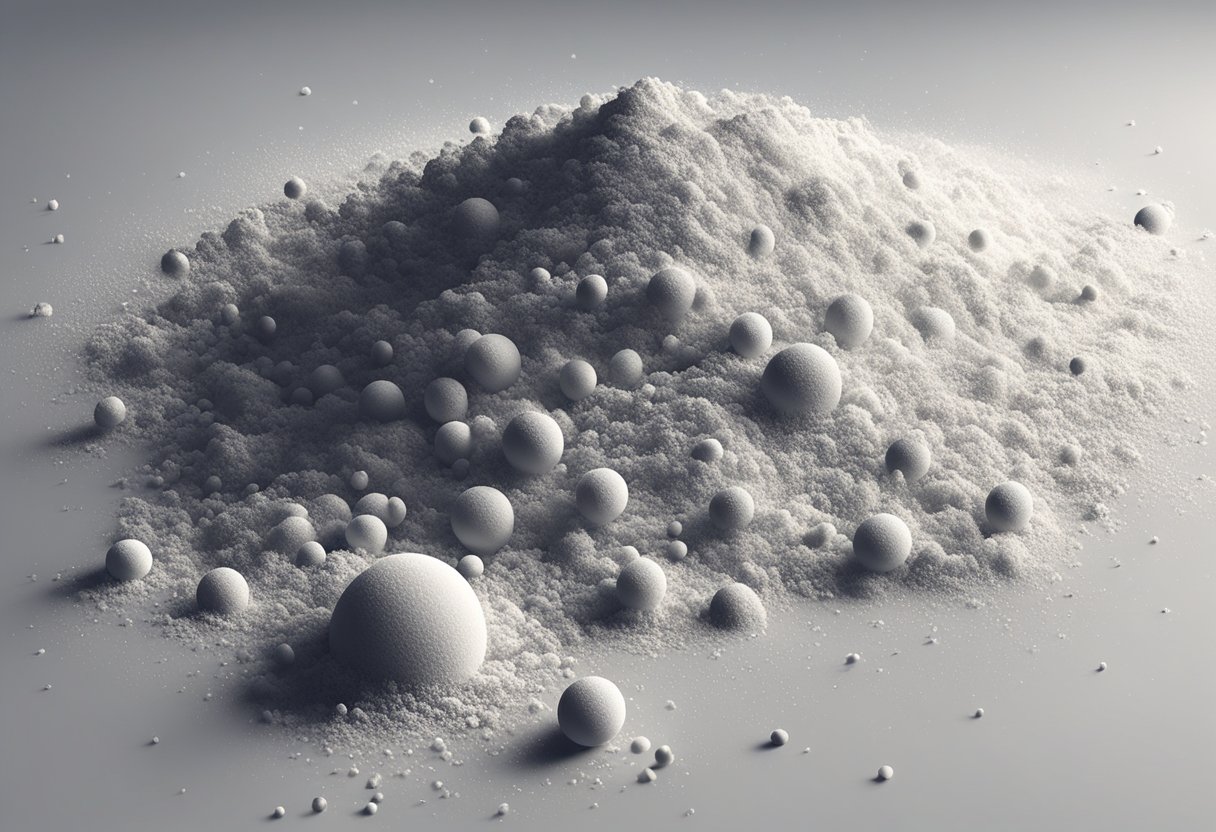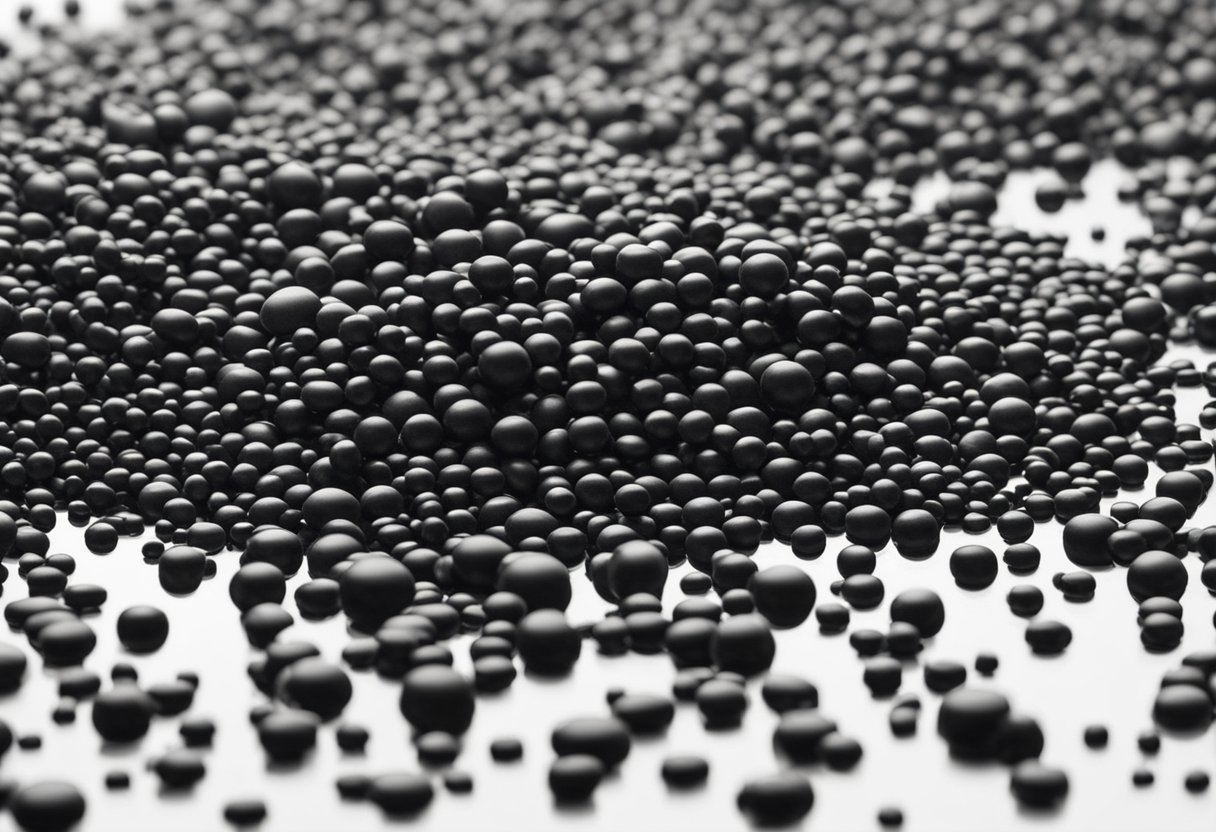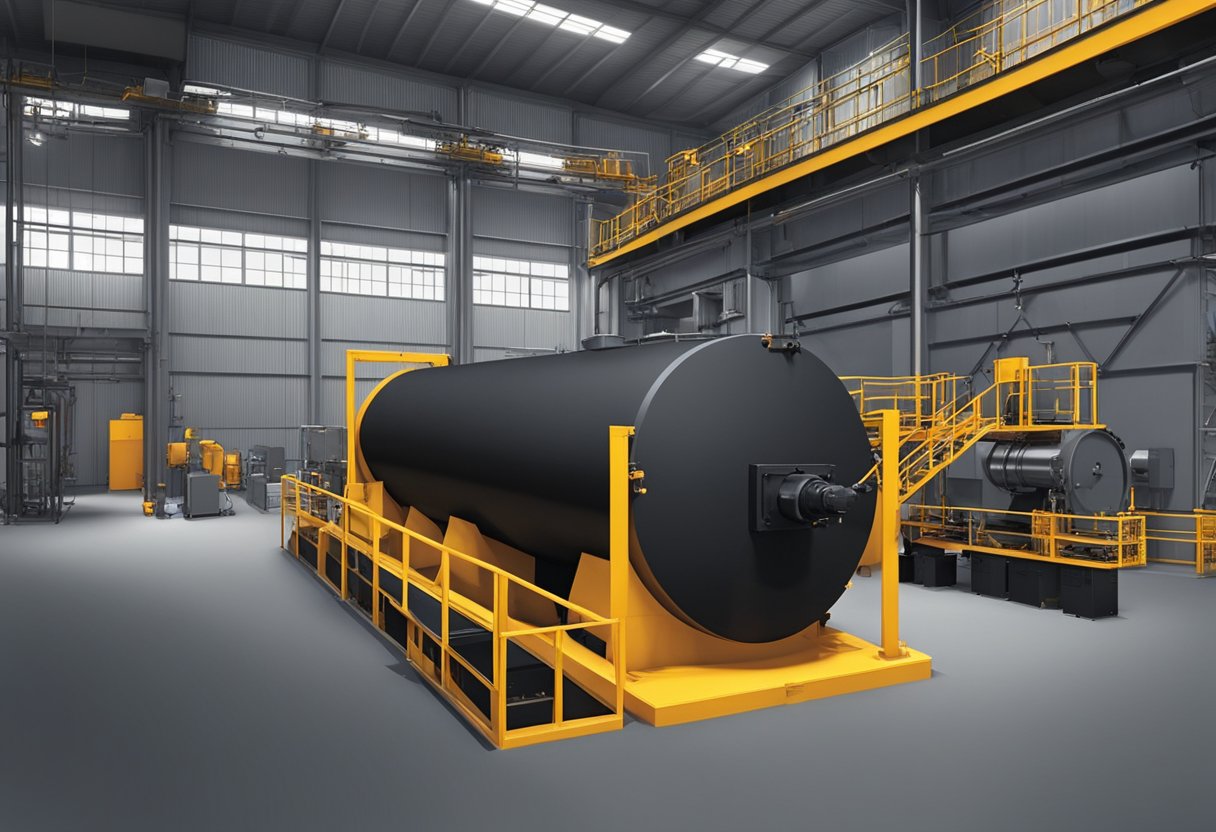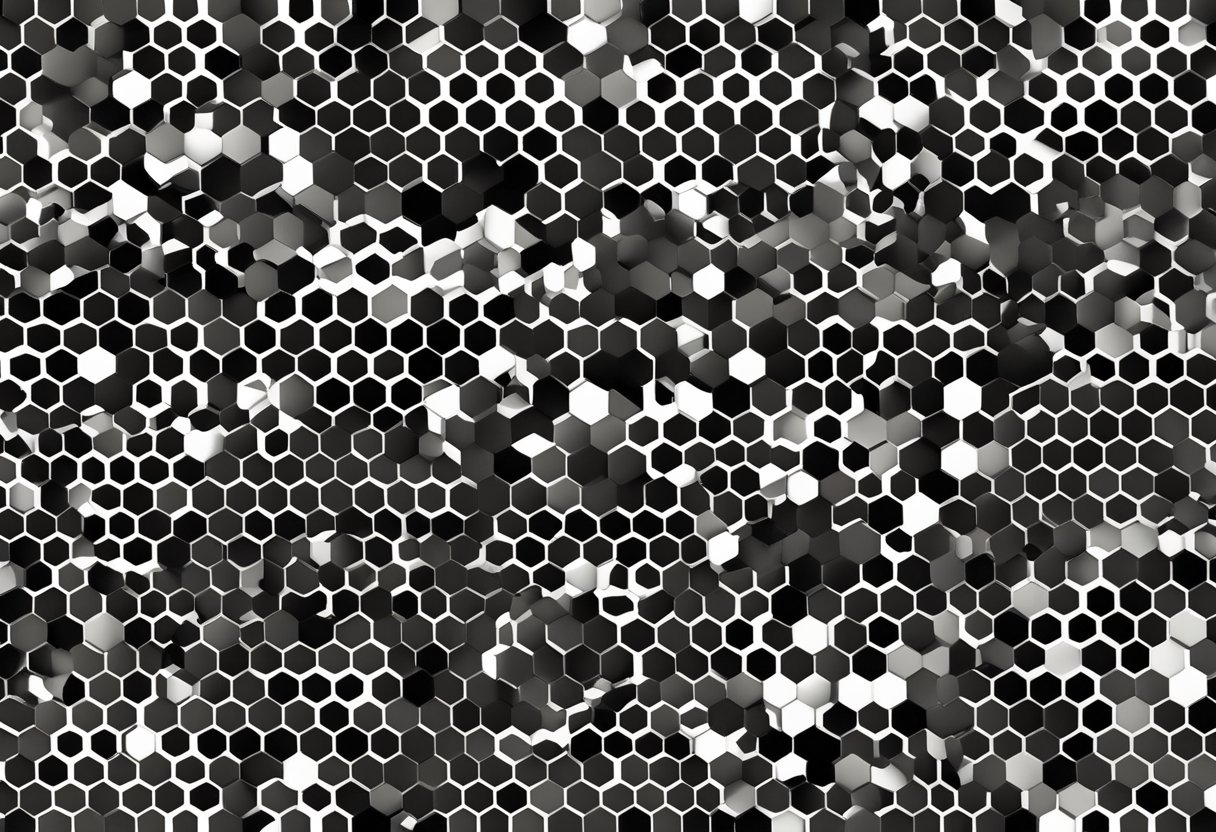Carbon Black N774: Properties, Applications, and Market Trends
20/01/2024
Carbon black N774 is a type of carbon black that is widely used in various industries. It is a high-performance reinforcing filler that is added to rubber products, plastics, and coatings to improve their physical and mechanical properties. Carbon black N774 is produced by the incomplete combustion of heavy petroleum products and is composed of small, spherical particles that are highly pure and free of impurities.

The unique properties of carbon black N774 make it an essential ingredient in many industrial applications. In the rubber industry, it is used to improve the strength, durability, and resistance to wear of tires, belts, hoses, and other products. In the plastics industry, it is added to improve the electrical conductivity, UV resistance, and color stability of products. In the coatings industry, it is used as a pigment to provide deep black color and to improve the weatherability and durability of coatings.
Overall, carbon black N774 is a versatile and valuable material that plays a critical role in many industrial processes. Its unique properties make it an essential component in a wide range of products, and its use is expected to continue to grow in the coming years as new applications are developed and existing products are improved.
Chemical and Physical Properties

Chemical Composition
Carbon black N774 is a highly pure form of carbon with a chemical formula of C. It is produced by the incomplete combustion of petroleum products, natural gas, or coal tar. The carbon black N774 is composed of elemental carbon, oxygen, and small amounts of hydrogen, nitrogen, and sulfur. The purity of the carbon black N774 is essential for its use in various applications, including rubber, ink, paint, and plastic industries.
Physical Characteristics
Carbon black N774 is a fine, black powder with a specific surface area ranging from 30 to 60 m²/g. It has a density of 1.8 g/cm³ and a melting point of around 3550°C. The particle size of carbon black N774 ranges from 10 to 500 nm, with an average particle size of 50 nm. The powder is hydrophobic and insoluble in water, but it is soluble in some organic solvents.
Carbon black N774 has excellent physical properties, including high tensile strength, low thermal expansion, and good electrical conductivity. These properties make it an ideal material for use in the production of tires, belts, hoses, and other rubber products. It is also used as a pigment in inks, paints, and plastics due to its high blackness and color stability.
In conclusion, carbon black N774 has unique chemical and physical properties that make it a versatile material for various industrial applications. Its high purity, fine particle size, and excellent physical properties make it an ideal material for use in the rubber, ink, paint, and plastic industries.
Production Process

Furnace Black Method
Carbon black N774 is produced through the furnace black method, which involves the incomplete combustion of hydrocarbons. The process begins with the introduction of feedstock, typically heavy petroleum oil, into a furnace at high temperatures. The feedstock is then vaporized and burned with a limited supply of air, which results in the formation of carbon black particles.
The carbon black particles are then cooled and collected using a bag filter system. The collected carbon black is then further processed to remove impurities and improve its physical properties.
Thermal Black Process
Another method of producing carbon black N774 is through the thermal black process. This process involves the decomposition of natural gas or other hydrocarbons in the absence of air or oxygen. The process is carried out in a reactor vessel at high temperatures, typically above 1000°C.
The carbon black particles produced through the thermal black process are then cooled and collected using a bag filter system. The collected carbon black is then further processed to remove impurities and improve its physical properties.
Overall, the production process for carbon black N774 is a complex and highly controlled process that requires careful attention to detail and quality control. The resulting carbon black is a highly versatile material that is used in a wide range of industrial applications, including rubber, plastics, and coatings.
Applications

Rubber Reinforcement
Carbon black N774 is widely used as a reinforcing agent in rubber products. It improves the strength, durability, and abrasion resistance of rubber, making it ideal for use in tires, conveyor belts, and other industrial rubber products. The high surface area and porosity of N774 make it an effective filler, improving the mechanical properties of the rubber without significantly increasing its weight.
Pigments and Coatings
Carbon black N774 is also used as a pigment in inks, paints, and coatings. Its high tinting strength and UV resistance make it suitable for use in black and dark colored coatings, providing a rich, deep black color that lasts for years. It is also commonly used in printing inks, where its ability to absorb UV light helps to prevent fading and degradation over time.
Plastics
Carbon black N774 is used as a filler and reinforcing agent in various plastic applications, including automotive parts, pipes, and packaging materials. It improves the mechanical properties of the plastic, such as its strength, stiffness, and impact resistance, while also reducing its flammability. N774 is particularly effective in high-density polyethylene (HDPE) and polypropylene (PP) applications, where it helps to improve the product’s resistance to UV radiation and environmental degradation.
In conclusion, carbon black N774 is a versatile material with a wide range of applications in various industries. Its unique properties make it an ideal choice for use in rubber, coatings, and plastic products, providing improved performance and durability.
Market Analysis

Demand and Supply Trends
Carbon black N774 is a widely used reinforcing filler in the rubber industry. The demand for carbon black N774 has been increasing due to the growth of the tire and rubber industries. The increasing demand for high-performance tires and the growing automotive industry are the major drivers of the carbon black N774 market.
The supply of carbon black N774 is expected to remain stable due to the presence of a large number of manufacturers in the market. However, the prices of carbon black N774 are expected to rise due to the increase in the cost of raw materials and transportation.
Global Market Distribution
The global carbon black N774 market is dominated by Asia-Pacific, followed by North America and Europe. The growth of the tire and rubber industries in Asia-Pacific is the major factor contributing to the dominance of this region in the carbon black N774 market.
China is the largest producer and consumer of carbon black N774 in the world. The country has a large number of carbon black N774 manufacturers, which makes it a highly competitive market. North America and Europe are mature markets for carbon black N774, and the demand in these regions is expected to grow at a slow pace in the coming years.
In conclusion, the carbon black N774 market is expected to grow due to the increasing demand from the tire and rubber industries. The supply of carbon black N774 is expected to remain stable, but the prices are expected to rise due to the increase in the cost of raw materials and transportation. The Asia-Pacific region is expected to dominate the global market due to the growth of the tire and rubber industries in the region.
Environmental Impact
Emissions and Regulations
Carbon black N774 is produced through the partial combustion of heavy petroleum products. This process releases various pollutants, including nitrogen oxides, sulfur oxides, and particulate matter. However, the emissions from carbon black production are regulated by various agencies, including the Environmental Protection Agency (EPA) in the United States and the European Union’s Industrial Emissions Directive. These regulations require the use of advanced emission control technologies to reduce the impact of carbon black production on the environment.
Recycling and Disposal
Carbon black N774 is not biodegradable and can persist in the environment for a long time. Therefore, it is important to properly dispose of any waste generated during the production process. The most common method of disposal is to bury the waste in a landfill. However, there are efforts to recycle carbon black waste to reduce its environmental impact. Some companies are exploring the use of carbon black waste as a fuel source or as a component in the production of other materials.
Overall, while carbon black N774 production does have an environmental impact, regulations and efforts to recycle and properly dispose of waste can mitigate this impact.
Health and Safety
Exposure Risks
Carbon black N774 is classified as a hazardous material due to its potential health risks. Inhalation of carbon black particles can cause respiratory irritation, coughing, and shortness of breath. Long-term exposure to carbon black can lead to lung damage and even cancer. Skin and eye contact with carbon black can also cause irritation.
The risk of exposure to carbon black is highest for workers in industries that use or produce carbon black, such as rubber manufacturing, printing ink production, and plastics manufacturing. It is important for workers to take appropriate precautions to minimize their exposure to carbon black.
Protective Measures
To protect against exposure to carbon black, workers should wear appropriate personal protective equipment (PPE) such as respirators, gloves, and goggles. Employers should also implement engineering controls such as ventilation systems and enclosed processes to minimize the release of carbon black particles into the air.
It is important for workers to receive proper training on the potential health risks of carbon black and how to use PPE effectively. Employers should also provide regular medical monitoring for workers who are exposed to carbon black to detect any potential health effects early.
Overall, proper handling and control of carbon black is essential to ensure the health and safety of workers in industries that use or produce this material.
Quality and Standards
Industry Specifications
Carbon Black N774 is a high-quality carbon black that meets various industry specifications. The product is manufactured in compliance with ASTM D1765, which sets the standard for carbon black used in the rubber industry. The product also meets the requirements of ISO 7724-2, which specifies the reflectance factor of carbon black. In addition, the product meets the requirements of the European Union’s REACH regulation for chemical substances.
Testing Methods
To ensure the quality of Carbon Black N 774, various testing methods are employed during the manufacturing process. The product undergoes testing for particle size, surface area, and structure. The particle size is measured using a laser diffraction analyzer, while the surface area is determined using the BET method. The structure of the carbon black is evaluated using transmission electron microscopy (TEM).
Carbon Black N 774 is also tested for impurities such as ash, sulfur, and volatile matter. The ash content is determined by heating the sample at high temperatures, while the sulfur content is measured using a combustion method. The volatile matter is determined by heating the sample at a specific temperature and measuring the weight loss.
Overall, Carbon Black N 774 meets the highest quality and industry standards, making it a reliable and trusted product for various applications in the rubber industry.
Future Prospects
Technological Advancements
Carbon black N 774 has been an important component in various industries for several decades. However, with the advancement of technology, it is expected that the production and utilization of carbon black N 774 will become even more efficient and cost-effective in the future.
One of the key technological advancements in the production of carbon black N 774 is the use of sustainable and environmentally friendly methods. Companies are investing in renewable energy sources, such as solar and wind power, to reduce their carbon footprint and promote sustainable development. This will not only help in reducing the environmental impact but also improve the quality of the final product.
Another technological advancement is the development of new and innovative manufacturing processes that can produce high-quality carbon black N 774 with improved properties. For example, the use of plasma technology has been shown to enhance the surface area and porosity of carbon black N 774, resulting in better dispersion and improved performance in various applications.
Emerging Applications
Carbon black N 774 has a wide range of applications in various industries, including rubber, plastics, and coatings. However, with the increasing demand for sustainable and eco-friendly products, new and emerging applications for carbon black N 774 are being explored.
One such application is in the field of energy storage, where carbon black N 774 is being used as a conductive additive in lithium-ion batteries. The addition of carbon black N 774 improves the electrical conductivity and enhances the performance of the batteries, making them more efficient and long-lasting.
Another emerging application is in the field of 3D printing, where carbon black N 774 is being used as a filler material in the production of high-strength and durable parts. The addition of carbon black N 774 improves the mechanical properties of the parts and reduces their weight, making them ideal for use in various industries.
Overall, the future prospects of carbon black N 774 look promising, with new and innovative applications being discovered and technological advancements being made in its production and utilization.




